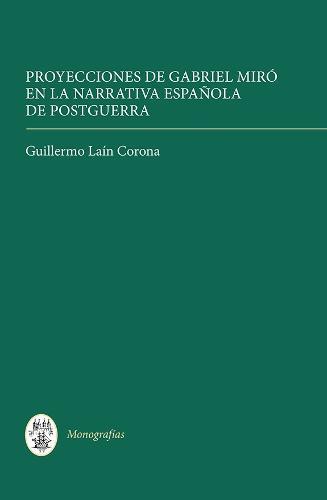Overview
Este libro muestra que Gabriel Miro no ha sido olvidado, sino que ha influido en la literatura hispanica posterior, en particular la novela de postguerra. ENGLISH VERSION This book shows that Gabriel Miro has been undervalued and how he has influenced Hispanic literature, particularly the novel of the post-Civil War period. ?Que ha hecho que la obra de Gabriel Miro parezca haberse relegado a un lugar marginal de la historia de la literatura espanola, con cada vez menos lectores? La pregunta no es baladi. Puede que Miro no fuera un escritor de maEn efecto, en concordancia con la estetica de vanguardia, fue un autor dificil. Pero fue una figura clave de la llamada edad de plata. Sus obras, ademas, suscitaron un interes de repercusiones mediaticas, como las polemicas eno a su retrato del clero o la presunta inmoralidad de su prosa y su heterodoxa vision de Cristo. En este libro, se sugieren las razones que han podido llevar a este injusto olvido literario y se muestra que, a pesar de todo, su obra nunca ha dejado de ser relevante, y ha influido en autores de postguerra tan importantes como Camilo Jose Cela y Francisco Umbral, en la obra narrativa de un filologo de tanto prestigio como Antonio Prieto y en otros novelistas como Pedro de Lorenzo, Antonio Zoido y Adolfo Lizon. Guillermo Lain Corona es profesor de lengua y literatura espanolas en University College London. ENGLISH VERSION Why does it seem that Gabriel Miro has been neglected as a secondary writer in the literary history of Spain, with fewer and fewer readers? Miro might not have had a mass readership, as, according to the aesthetics of the Avant-Garde, he was a difficult writer. However, hisworks attracted the kind of attention that fascinated the media, including the controversies surrounding his portrayals of the clergy, the supposed immorality of his prose and his heterodox view of Christ. This book tackles the reasons for this unfair neglect and shows that, despite it, his work was never completely overlooked. Indeed, Miro influenced relevant writers of the post-Civil War period, such as Camilo Jose Cela and Francisco Umbral, as well as the prose fiction of an important philologist like Antonio Prieto and other novelists such as Pedro de Lorenzo, Antonio Prieto and Adolfo Lizon. Guillermo Lain Corona is a Teaching Fellow in Spanish Language and Literature at University College London.
Full Product Details
Author: Guillermo Laín Corona
Publisher: Boydell & Brewer Ltd
Imprint: Tamesis Books
Volume: v. 332
Dimensions:
Width: 15.60cm
, Height: 1.90cm
, Length: 23.40cm
Weight: 0.540kg
ISBN: 9781855662704
ISBN 10: 1855662701
Pages: 232
Publication Date: 21 March 2014
Audience:
Professional and scholarly
,
Professional & Vocational
Format: Hardback
Publisher's Status: Active
Availability: In Print

This item will be ordered in for you from one of our suppliers. Upon receipt, we will promptly dispatch it out to you. For in store availability, please contact us.
Language: Spanish
Author Information
Teaching Fellow of Spanish Language and Literature, University College London




